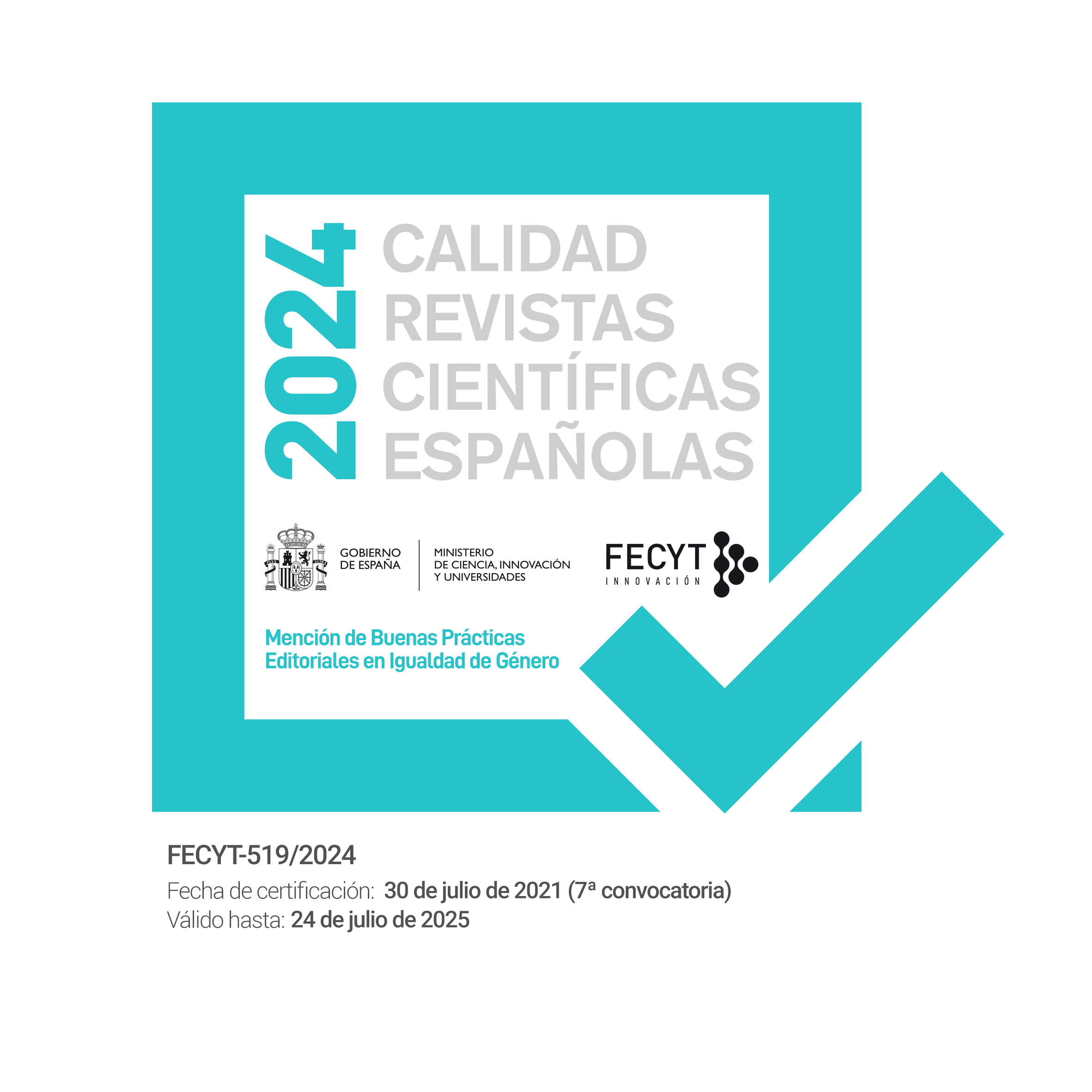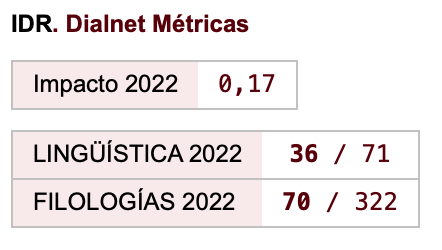Meaning construction in the Brexit process
Keywords:
metaphor, metonymy, image schemas, political discourse, BrexitAbstract
The aim of this study to shed some light on the way meaning is constructed in different stages in the Brexit process through some covers of The Economist magazine. The present paper lies within the scope of the research into the instantiation of metaphor, metonymy and image schemas. This analysis has been structured according to the Conceptual Metaphor Theory (Lakoff & Johnson 1980; Ruiz de Mendoza & Pérez, 2011, among others) on the one hand, and the Multimodal Theory (Forceville 1996, 2009, 2012, 2016; Forceville & Urios-Aparisi, 2009) on the other, which have revealed that meaning is created through modes of communication other than verbal ones. The paper shows the role of monomodal and multimodal metaphor and metonymy as persuasive devices in magazine covers and the image-schematic basis of many metaphors and metonymies. In addition the results reveal that many multimodal metaphors are actually metonymy-based.
Downloads
References
Barcelona, A. (Ed.) (2000). Metaphor and metonymy at the crossroads: A cognitive perspective. Berlin: Mouton de Gruyter.
Bijeikienė, V., & Meškauskienė, A. (2013). Metaphor and metonymy in English for politics (ESP) course: Students’ representations and practices. Sustainable Multilingualism, 2, 90-99.
Burkholder, T. R., & Henry, D. (2009). Criticism of metaphor. In J. A. Kuypers (Ed.), Rhetorical criticism: Perspectives in action (pp. 97-114). Lanham, MD: Lexington Books.
Caballero, R., & Suárez-Toste, E. (2008). Translating the senses. Teaching the metaphors in wine speak. In F. Boers, & S. Lindstromberg (Eds.), Cognitive linguistic approaches to teaching vocabulary and phraseology (pp. 241-259). Berlin: Mouton de Gruyter.
Cammaerts, B. (2012). The strategic use of metaphors by political and media elites: The 2007-11 Belgian constitutional crisis. International Journal of Media & Cultural Politics, 8(2/3), 229- 249.
Charteris-Black, J. (2004). Corpus approaches to critical metaphor analysis. Basingstoke/New York: Palgrave Macmillan.
Charteris-Black, J., & Musolff, A. (2003). Battered ‘hero’ or ‘innocent victim’? A comparative study of metaphors for euro trading in British and German financial reporting. English for Specific Purposes, 22, 153-176.
Chilton, P (2008). Political terminology. In R. Wodak, & V. Köller (Eds.), Handbook of communication in the public sphere (pp. 225-242). Berlin/NewYork: Mouton de Gruyter.
Chilton, P. & Schäffner, C. (1997). Discourse and Politics. In T. A. van Dijk (Ed.), Discourse as social interaction (pp.206.230). London: Sage.
Cortés de los Ríos, M. E. (2010). Cognitive devices to communicate the economic crisis: An analysis through covers in The Economist. Ibérica, 20, 81-106.
Cortés de los Ríos, M. E. & Felices Lago, A. (2017). A cognitive-axiological approach to the chairman’s letter of the leading civil aircraft manufacturers. Ibérica, 34, 111-136.
Deepali, R. (2016). Impact and Relevance of Design Principles in Magazine Covers: A Content Analysis. Amity Journal of Media & Communication Studies, 6(1), 15-25.
Díez Velasco, O. I. (2001). Metaphor, metonymy, and image-schemas: An analysis of conceptual interaction patterns. Journal of English Studies, 3, 47-63.
Đurović, T., & Silaški, N. (2018). The end of a long and fraught marriage: Metaphorical images structuring the Brexit discourse. Metaphor and the Social World, 8(1), 25–39.
Evans, V., & Green, M. (2006). Cognitive linguistics: An introduction. Mahwah NJ: Lawrence Erlbaum Associates.
Forceville, C. (1996). Pictorial metaphor in advertising. London: Routledge.
Forceville, C. (2006). Non-verbal and multimodal metaphor in a cognitivist framework: Agendas for research. In G. Kristiansen, M. Achard, R. Dirven, & F. Ruiz de Mendoza Ibáñez (Eds.), Cognitive linguistics: Current applications and future perspectives (pp. 379-402). Berlin: Mouton de Gruyter.
Forceville, C. (2008). Metaphor in pictures and multimodal representations. In R. W. Gibbs Jr. (Ed.), The Cambridge handbook of metaphor and thought (pp. 462-482). Cambridge: Cambridge University Press.
Forceville, C. (2009). Non-verbal and multimodal metaphor in a cognitivist framework: Agendas for research. In C. J. Forceville, & E. Urios-Aparisi (Eds.), Multimodal metaphor (pp. 19-42). Berlin/NewYork: Mouton de Gruyter.
Forceville, C. (2012). Creativity in pictorial and multimodal advertising metaphors. In R. Jones (Ed.), Discourse and creativity (pp. 113-132). Harlow: Pearson/Longman.
Forceville, C. (2016). Visual and multimodal metaphor in film: Charting the field. In K. Fahlenbrach (Ed.), Embodied metaphors in film, television and video games: Cognitive approaches (pp. 17-32). London: Routledge.
Forceville, C., & Urios-Aparisi, E. (2009). Multimodal metaphor. Berlin: Mouton de Gruyter.
García Castillo, J.F. (2004). Metonymy and thought: verifying Ruíz de Mendoza & Otal's model of metonymy (a corpus-driven research). Jornades de Foment de la Investigació, 1-14. http://repositori.uji.es/xmlui/bitstream/handle/10234/78888/forum_2004_
pdf?sequence=1 [12-102019].
Gibbs, R., & Coslton, H. (2006). The cognitive psychological reality of image schemas and their transformations. In D. Geraerts (Ed.), Cognitive linguistics (pp. 239-268). Berlin: Mouton de Gruyter.
Goossens, L. (1995). Metaphtonymy: The interaction of metaphor and metonymy in expressions for linguistic action. In L. Goossens, P. Pauwels, B. Rudzka-Ostyn, A. M. Simon-Vanderbergen, & J. Vanparys (Eds.), By word of mouth: Metaphor, metonymy and linguistic action in a cognitive perspective (pp. 159-174). Amsterdam: John Benjamins.
Johnson, M. (1987). The body in the mind: The bodily basis of meaning, imagination, and reason. Chicago: The University of Chicago Press.
Koller, V., Kopf, S., & Miglbauer, M. (Eds.) (2019). Talking about Brexit – voices from before and after the referendum. London and New York: Routledge.
Kövecses, Z. (2010). Metaphor. Oxford/New York: Oxford University Press.
Kress, G., & van Leeuwen, T. (2001). Multimodal discourse: The modes and media of contemporary communication. London: Arnold.
Kress, G., & Van Leeuwen, T. (2006). Reading Images (2nd ed.). London: Routledge.
Krzeszowski, T. P. (1990). The axiological aspect of idealized cognitive models. In J. Tomaszczyk, & B. Lewandowska (Eds.), Meaning and lexicography (pp. 135-165). Amsterdam: John Benjamins.
Krzeszowski, T. P. (1993). The axiological parameter in preconceptual image schemata. In R. A. Geiger, & B. Rudzka-Ostyn (Eds.), Conceptualizations and mental processing in language (pp. 307-330). Berlin: Mouton de Gruyter.
Krzeszowski, T. P. (1997). Angels and devils in hell. Elements of axiology in semantics. Warsaw: Energeia.
Lakoff, G. (1987). Women, fire, and dangerous things: What categories reveal about the mind. Chicago: University of Chicago Press.
Lakoff, G. (1993). The contemporary theory of metaphor. In A. Ortony (Ed.), Metaphor and thought (2nd ed.) (pp. 202-251). Cambridge: Cambridge University Press.
Lakoff, G., & Johnson, M. (1980). Metaphors we live by. Chicago: University of Chicago.
Lakoff, G., & Johnson, M. (1999). Philosophy in the flesh. The embodied mind and its challenge to western thought. New York: Basic Books.
Lakoff, G., & Turner, M. (1989). More than cool reason: A field guide to poetic metaphor. Chicago: University of Chicago Press.
Langacker, R. (1993). Reference-point constructions. Cognitive Linguistics, 4, 1-38.
Mio, J. S. (1997). Metaphor and politics. Metaphor and Symbol, 12(2), 113-133.
Musolff, A. (2017). Truth, lies and figurative scenarios: Metaphors at the heart of Brexit.
Journal of Language and Politics, 16(5), 641-657.
Negro Alousque, I. (2015). CORRUPTION IS DIRT: Metaphors for political corruption in the Spanish press. Bulletin of Hispanic Studies, 92(3), 231-238.
O´toole, F. (2019). Heroic Failure: Brexit and the Politics of Pain. Head of Zeus: London.
Pérez Sobrino, P. (2017). Multimodal metaphor and metonymy in advertising. Amsterdam/Philadelphia: John Benjamins.
Pragglejaz Group (2007). MIP: A method for identifying metaphorically used words in discourse. Metaphor and Symbol, 22(1), 1-39.
Ruiz de Mendoza Ibáñez, F. J. (1997). Metaphor, metonymy and conceptual interaction. Atlantis, XIX(1), 281-295.
Ruiz de Mendoza Ibáñez, F. J. (2000). The role of mappings in understanding metonymy. In A. Barcelona (Ed.), Metaphor and metonymy at the crossroads: A cognitive perspective (pp. 109-132). Berlin: Mouton de Gruyter.
Ruiz de Mendoza Ibáñez, F. J. &Díez Velasco, O. I. (2002). Patterns of conceptual interaction. In R. Dirven, & R. Pörings (Eds.), Metaphor and metonymy in comparison and contrast (pp. 489-532). Berlin: Mouton de Gruyter.
Ruiz de Mendoza Ibáñez, F. J., & Pérez-Hernández, L. (2011). The contemporary theory of metaphor: Myths, developments and challenges. Metaphor and Symbol, 26(3), 161-185.
Ruiz de Mendoza Ibáñez, F. J., & Galera Masegosa, A. (2014). Cognitive modeling: A linguistic perspective. Amsterdam/Philadelphia: John Benjamins.
Silaški, N., & Đurović, T. (2010). The conceptualisation of the global financial crisis via the ECONOMY IS A PERSON metaphor – A contrastive study of English and Serbian. Facta Universitatis, Series: Linguistics and Literature, 8(2), 129-139.
Silaški, N., & Đurović, T. (2017). Saving the euro: A multimodal analysis of metaphors depicting the Eurozone crisis. Ibérica, 33, 125-146.
Turner, M. (1991). Reading minds: The study of English in the age of cognitive science. Princeton, NJ: Princeton University Press.
Ventola, E., Cassily, C., & Kaltenbacher, M. (2004). Perspectives on multimodality. Amsterdam: John Benjamins.
Downloads
Published
How to Cite
Issue
Section
License
Authors who publish with this journal agree to the following terms:
- Authors retain copyright and grant the journal right of first publication with the work simultaneously licensed under a Creative Commons Attribution License that allows others to share the work with an acknowledgement of the work's authorship and initial publication in this journal.
- Authors are able to enter into separate, additional contractual arrangements for the non-exclusive distribution of the journal's published version of the work (e.g., post it to an institutional repository or publish it in a book), with an acknowledgement of its initial publication in this journal.
- Authors are permitted and encouraged to post their work online (e.g., in institutional repositories or on their website) prior to and during the submission process, as it can lead to productive exchanges, as well as earlier and greater citation of published work (See The Effect of Open Access).

Revista de Lenguas para fines específicos is licensed under a Creative Commons Reconocimiento-NoComercial-SinObraDerivada 4.0 Internacional License.
























